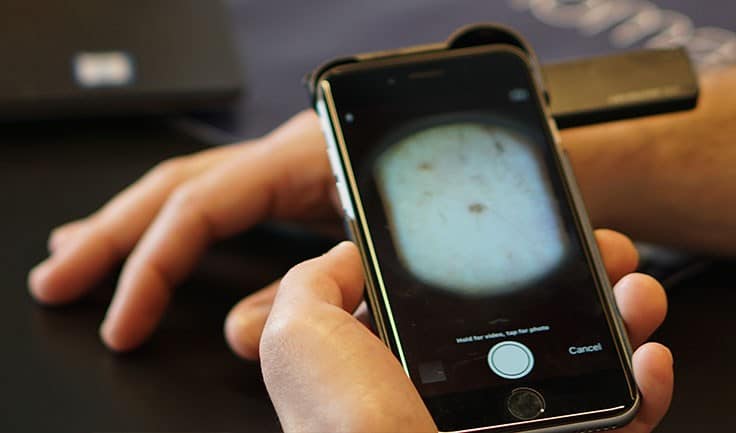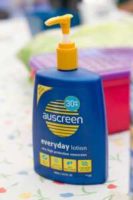MedicalResearch.com Interview with:
Reza Ghiasvand, PhD
Oslo Centre for Biostatistics and Epidemiology
Faculty of Medicne
University of Oslo
Oslo, Norway
MedicalResearch.com: What is the background for this study?
Response: Melanoma is the most dangerous type of skin cancer. It is estimated that about 288,000 individuals will be diagnosed and about 61,000 will die from it in 2018, with the majority of patients in Australia, New Zealand, Europe and North America. Ultraviolet (UV) exposure (from both the sun and tanning beds) is the most important preventable risk factor for melanoma. However, the association between UV exposure and melanoma is complex and does not accord with a simple model in which risk increases directly with exposure. An individual risk of melanoma also depends on personal characteristics such as skin color and skin sensitivity to the UV exposure, hair color, number of moles, and age.
It has been hypothesized that the pattern of UV exposure may play a role in melanoma development in different body sites. For example, melanoma on the trunk (chest and back) has been linked to the recreational UV exposure such as sunbathing and frequent sunburns in people with high number of moles on their body. In contrast, melanomas on the head and neck have been linked to constant sun exposure such as occupational UV exposure, mainly in older people. Epidemiologic and molecular evidence in support of this hypothesis has been published based on analyses of small datasets. Also, melanoma on legs and arms is less studied under this hypothesis.
In our study, we examined UV exposure (sunbathing, sunburn and
sunbed use) and pigmentary factors (skin, eye, and hair color, freckling, and number of moles), and risk of melanoma on different body sites. We used information from the Norwegian Women and Cancer Study, a population-based cohort study that started in 1991, and includes more than 161,000 Norwegian women followed for an average of 18 years.
(more…)






 Dr. Helen Marsden PhD
Skin Analytics Limited
London, United Kingdom
MedicalResearch.com: What is the background for this study?
Response: In this technology age, with the explosion of interest and applications using Artificial Intelligence, it is easy to accept the output of a technology-based test - such as a smartphone app designed to identify skin cancer - without thinking too much about it. In reality, technology is only as good as the way it has been developed, tested and validated. In particular, AI algorithms are prone to a lack of “generalisation” - i.e. their performance drops when presented with data it has not seen before. In the medical field, and particularly in areas where AI is being developed to direct a patient’s diagnosis or care, this is particularly problematic. Inappropriate diagnosis or advice to patients can lead to false reassurance, heightened concern and pressure on NHS services, or worse. It is concerning, therefore, that there are a large number of smartphone apps available that provide an assessment of skin lesions, including some that provide an estimate of the probability of malignancy, that have not been assessed for diagnostic accuracy.
Skin Analytics has developed an AI-based algorithm, named: Deep Ensemble for Recognition of Malignancy (DERM), for use as a decision support tool for healthcare providers. DERM determines the likelihood of skin cancer from dermoscopic images of skin lesions. It was developed using deep learning techniques that identify and assess features of these lesions which are associated with melanoma, using over 7,000 archived dermoscopic images. Using these images, it was shown to identify melanoma with similar accuracy to specialist physicians. However, to prove the algorithm could be used in a real life clinical setting, Skin Analytics set out to conduct a clinical validation study.
Dr. Helen Marsden PhD
Skin Analytics Limited
London, United Kingdom
MedicalResearch.com: What is the background for this study?
Response: In this technology age, with the explosion of interest and applications using Artificial Intelligence, it is easy to accept the output of a technology-based test - such as a smartphone app designed to identify skin cancer - without thinking too much about it. In reality, technology is only as good as the way it has been developed, tested and validated. In particular, AI algorithms are prone to a lack of “generalisation” - i.e. their performance drops when presented with data it has not seen before. In the medical field, and particularly in areas where AI is being developed to direct a patient’s diagnosis or care, this is particularly problematic. Inappropriate diagnosis or advice to patients can lead to false reassurance, heightened concern and pressure on NHS services, or worse. It is concerning, therefore, that there are a large number of smartphone apps available that provide an assessment of skin lesions, including some that provide an estimate of the probability of malignancy, that have not been assessed for diagnostic accuracy.
Skin Analytics has developed an AI-based algorithm, named: Deep Ensemble for Recognition of Malignancy (DERM), for use as a decision support tool for healthcare providers. DERM determines the likelihood of skin cancer from dermoscopic images of skin lesions. It was developed using deep learning techniques that identify and assess features of these lesions which are associated with melanoma, using over 7,000 archived dermoscopic images. Using these images, it was shown to identify melanoma with similar accuracy to specialist physicians. However, to prove the algorithm could be used in a real life clinical setting, Skin Analytics set out to conduct a clinical validation study.

















